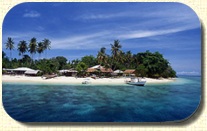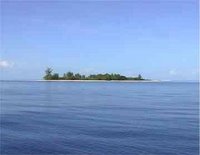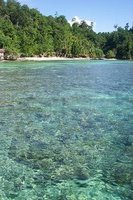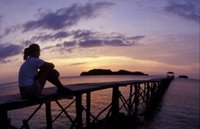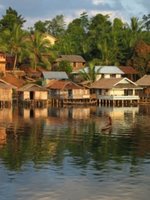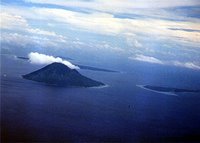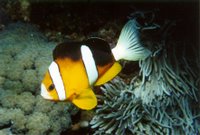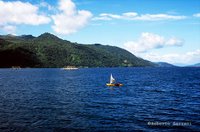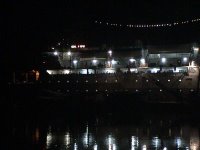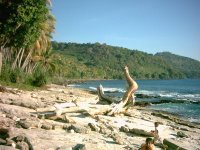
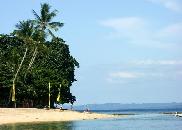
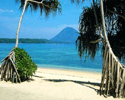
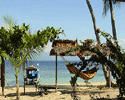
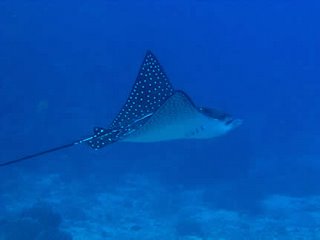
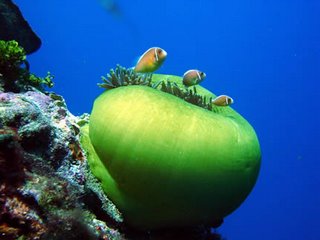
Siladen has a beautiful wall of soft corals that bloom when the current is running. The shallows are nice with lots of fishes and schooling snappers. Siladen Island is very nice spot for both snorkeling and diving. This site is located off Siladen Island about a 45 minute trip by boat. There is a variety of exquisite soft corals at the reef top. Turtles, Napoleon Wrasses, and other small creatures are common sights here. Groupers, Butterflyfish, Sting Rays, and Spotted Eagle Rays are possible to encounter. The currents are moderate to strong. Rated : Advanced diver; vertical wall diving; depth 5-30m; av vis 25m; strong currents
Siladen Island Utara.
This dive site is located right behind Siladen Island. The current is moderate to strong – making it a site for experienced divers. This is a good place to see Turtles. Snappers, Emperor Angelfish, and reef white tip sharks are also found here. A lot of macro life at the stepped sandy bottom. Rated: Advanced diver; depth 15-25m;av vis 25m; strong currents
to reach Siladen island you can go from Bunaken Island or Manado city.
Scubapro diving and snorkelling equipment is available for rent. You can select among a full range of diving packages, including unlimited diving. If you do not have a diving certificate or if you want to improve your diving skills, a full range of PADI diving courses is offered in English, French, Italian, German and Indonesian.
The guides will take you diving at over 30 sites in the Bunaken Marine Park, one of the world's premium diving areas, and to our very own recently discovered sites. Here you will discover a full range of marine life, of all sizes, shapes and... colours! Night diving on our house reef will add a memorable experience to your stay.
At the diving center you will also be able to book other activities such as trekking, rafting, fishing and canyoning.

